How to not screw up your product strategy
As a consultant, I have a view across many companies. So I’ve seen a lot of product strategies. Most have been problematic. Occasionally, I see an example of a product strategy that stands out. Today, I review common problems with product strategies. Then, we’ll cover how to craft a product strategy that avoids these problems.
Problem: product strategies take too long to create
Putting together a product strategy is fucking hard. And while it is important, it’s easy to defer.
Sometimes, you don’t have all the information you need. You need to develop deep expertise in your area or market. That requires time – contacting people, having lots of conversations, and developing a deep sense of the dynamics of your space.
Writing down your thoughts requires sustained, focused time. The people who usually write product strategy (CEOs or heads of product) have hard jobs that lure them from that focused effort. This can result in it taking a long time to put together.
Creating the strategy also requires influencing and collaborating with many people. All of these interactions require time to get people on the same page, discuss disagreements, and incorporate improvements or changes.
Finally, your market can change quickly. New competitors can emerge, technologies change, and customer feedback can shift. These all can result in changes in perspective or emphasis, which can further slow down putting together a product strategy.
And finally, even after you’ve done all the hard work putting the strategy together, you have a lot of work to do communicating that strategy, and getting people to understand it. This also takes a lot of time.
The end result of all these steps is that a common failure mode is “the product strategy is coming”.
My recommendation is to always have a working product strategy. Because strategy work takes time, you shouldn’t make people wait for it. If you don’t have a real strategy, start with a temporary, short-term strategy, based on your best thinking at the moment. Saying the product strategy will be created in the next few months creates the opposite of clarity, and is a common product management failure mode.
When you’re starting out, it will be a bad product strategy. And you can be up front about the fact that it is temporary. But people often need some sort of guidance about direction, and having temporary guidance is way better than no guidance at all.
Problem: product strategies that are a roadmap
I’ve seen some leaders view the product strategy as a communication challenge. They know what needs to be done. They just need to tell their vision to a bunch of people.
So, they write down some themes to focus on. And they share a roadmap, and talk about why it is important. Then they clap their hands together and say, “done!”. They’re not done.
Usually, they then get feedback that people are still confused. So they give another presentation on the “strategy”, and it helps, a little. But all they really did is communicate what the company will be working on. People are still confused.
A strategy isn’t just a list of things to do. It’s not merely a roadmap. So calling a roadmap your product strategy doesn’t work, and that’s part of the reason it doesn’t clarify as much as you would like.
We’ll discuss the parts of a real strategy later in this post. But for now, my advice is to view a product strategy as a larger piece of work than a communication exercise, or a prioritization exercise.
Problem: product strategies that are goals
Leaders often view the product strategy as a tool to get people aligned. And goals are a way to get people aligned. So many leaders muddle the two together.
They say:
- “Our strategy is to land five big enterprise customers next quarter”
- “Our strategy is to grow our business 20% compared to last year.”
A goal is not a strategy.
Your goals should emerge naturally from your strategy.
This isn’t to say using goals is a bad idea. You should be familiar with all the tools at your disposal: Goals, tenets, standards, metrics, and centralized prioritization are all valid and effective coordination models. A product strategy is another. I recommend looking through each of them and understanding their tradeoffs. The product strategy is probably the most foundational of all of these options, though, so it’s the place I would recommend you start.
Problem: your product strategy doesn’t need to cover everything
“One issue I see is that there is a natural inclination to create a strategy that encompasses 100% of the activities of the company. It’s not bad to do it that way, but it’s not necessary. Some things have inertia. You only really need to include things in the strategy when they need to change. Focus on those things and everything else will be fine.” — Alex Kroman
How to put together a good strategy
So how do you go about crafting a product strategy? Here is some advice I’ve given. And I asked product leaders I respect what they thought, and they added their advice as well. Here’s my synthesized set of recommendations.
First, stop what you are doing and read these two books
Clear your schedule, and read this book: Understanding Michael Porter. If you’re not sure if it’s worth reading or not, start by reading this summary of Understanding Michael Porter. You’ll learn more about strategy from reading that book than anything else I’ve encountered.
A second book on putting together your strategy is Good Strategy, Bad Strategy.
Second, study your business and market
You need to understand the market you’re in to make a good strategy. This seems obvious, but I’ve seen a lot of product leaders try to make a product strategy without fully understanding their customers.
You should be able to answer these questions:
- What are the various segments of customers you have? (This should be as detailed as possible. It can include size of business, types of problems they face, how they purchase the product, what other products they use, and many other factors)
- Which customers are your best customers?
- Why do your customers choose your product? Why do customers choose competing products?
- What are the trends in your area of the market?
- Which trends are you well positioned to take advantage of? Which are you poorly positioned for?
- What is it like to purchase your product? What kind of an experience do people have when getting support, or learning your product?
- What is it like to sell your product?
Third, talk to a lot of people
How can you possibly learn the answers to all these questions about your market?
- You need to be talking with as many customers every week as you can. In some companies this is a challenge. This has to be solved immediately – if you and your peers aren’t connected with customers, your company will eventually fail.
- Go through the experience of signing up for your product. Try it out. Pretend you are various types of customer, and go through the experience you think they would have. Try the same thing on competitors’ and see what they are like.
- Talk with people within your company that have good information for you. Sales people. Analytics people. Support people. Partnership people. Finance people. Come prepared with lots of questions.
Fourth, start sketching out a draft strategy
Your strategy work should be iterative. So start clarifying your thinking by putting together a rough draft of an early strategy.
I recommend an outline similar to the following (similar to Good Strategy, Bad Strategy’s format):
- The situation. Outline the environment the business is in. This should include the business environment (runway, financial strengths and weaknesses, overall trends), what changes are happening in your space, what direction things are going (generally and with each competitor), if there are timing considerations where opportunities will close or open, and what the competitive environment is like. After reading this, everyone in your company should have an elevated understanding of the business situation and market conditions.
- The current product. Describe the state of the product. What are its capabilities? What are your liabilities, both in terms of what the product can do, and your ability to evolve it? What tech debt issues are you facing? Are you meeting goals for usage, user experience, and adoption? How does it interact with the current situation the business is in?
- The diagnosis. What is the most effective path forward? Describe what should be true in the future that isn’t true today, the path forward, and the implications of that choice. The path to being successful should be clear, and risks outlined. The purpose of this section is to be crystal clear — everyone who reads this section should understand why the company is focusing where it is and how that will connect with the company being successful. This section should outline your target customers, and how you will differentiate or compete.
- The argument and alternatives. You almost certainly have alternative approaches floating around. There are people within your organization that are committed to them. This is the section where you make the case for all the alternatives, and explain why they are less compelling choices than the one you’ve chosen.
As you’re writing the strategy, you’ll realize there are gaps in your understanding. That’s fine — highlight that there is missing information, and start tracking it down. Strategy work takes time and is a lot of work.
Use offsites and regular strategy sessions to talk through the various ways your company can succeed. And make sure you can articulate what the rest of the actors in the market are aiming to do strategy-wise.
Your work on this should be iterative, and even after you produce the first version, you’ll want to revisit it periodically.
Some tips while developing a strategy
Good strategy takes advantage of your strengths, and minimizes your weaknesses
I like to think of companies as being in an ecosystem in the same way that species are part of an ecosystem. If your strategy is to compete directly with another company, you better have a really strong reason to believe that you’ll outcompete that competitor. Head to head competition is usually not good for either party, so you have to have some sort of innate advantage that your competitor can’t compensate for. This is likely something like a capability they can’t easily add, or because your product is much less expensive than theirs due to some sort of structural reason.
When you key in on your competitive advantage, you have to be consistent with using that as a part of your strategy. For example, Google Docs was able to outperform Microsoft Word mostly because the value of collaborating on a document was so much greater in Google Docs, because it was web-based, and able to maintain centralized state. New Relic was able to establish itself in a whole new category of Application Performance Monitoring, because it was SaaS based and had a product led growth approach to purchase.
Strengths are usually structural like that, based on
- Network effects. The more customers you have, the more valuable your offering.
- Cost differentials. You can offer your product much less expensively than your competition. Or,
- Capabilities that aren’t easily replicated. You provide capabilities that a competitor would struggle to replicate, or it would degrade their product to replicate.
These are worth thinking deeply about. How can you build a business where someone can’t just come along and replicate everything you’ve done and destroy your business?
One exercise I like to do if you’re a market leader is to imagine what product you would build if you could take the best people from your company and to go off and create a competing product that would aim to destroy the original company. If you do this exercise, and your competition is pretty similar to what you come up with, you might be in trouble.
How do you know if you’ve thought enough about this?
“An extremely simple test of whether you have thought deeply enough about the strategy is to ask if the strategy could be followed by another competitor. If the answer is yes then you haven’t gone deep enough to understand your strengths/weaknesses” — Alex Kroman.
Good strategy includes where you don’t plan to win
Organizations also tend to want to do everything, so it’s important to make it explicit what you’re not planning to do.
Nadya Boone Duke: “So much of strategy is focusing on few things with enough vigor to make a difference. When I outlined a recent strategy I made an explicit section for ‘What we’re not doing.’ There are plenty of good ideas and they will ooze into the workstream unless you build a way to keep them out, and then dilute your focus on the big rocks.”
Henry Shapiro: “[A particularly good strategy we saw at New Relic] outlined the things we were not doing as a result of the strategy. This was part of jettisoning [an important but off-strategy new product], deciding to focus on our core audience, and not get sidetracked with adjacent markets.”
Good strategy addresses how you’ll overcome obstacles
Many times you won’t be in an ideal situation. You might have some big hairy problem you need to solve with product-market fit. Or you may have a competitor that you haven’t figured out how to compete against. You can outline the bets you’ll make, even if you don’t fully understand them yet.
Your strategy is a plan to be successful in the environment you’re in. It’s incomplete if it doesn’t meet that goal. It’s fine for your strategy to be incomplete, but you should continue to work on it.
Get buy in from the right people
The best strategy in the world won’t go anywhere if you can’t convince people it’s the strategy to follow.
Henry Shapiro: “I think one of the central challenges of the product strategy stuff is that strategy often has to balance buy-in with inertia. That is, the larger your cohort of ‘writers / feedback-givers’, the more the strategy suffers from groupthink and long collective bargaining efforts. I think [the thing to do is] to get buy-in from the right-people, which is a skill unto itself. Part of that is working with a single partner on the eng side to assess capacity and skill gaps, and having a similar partner on the biz / sales side, and maybe an exec who is going to have to buy in as well.”
Use “invent the future” meetings to focus creativity on the future
I read once that Steve Jobs dedicated most of his Mondays to talking with his most trusted advisors about the future. They spent all Monday talking through various aspects of how the future could play out, and how they could shape it. I don’t know if he actually did this, but after reading it, I played with something I started to call “Invent the Future meetings”.
Sometimes groups can have a vision that is too focused on the next month. If you need more focus on where you’re going, try an “invent the future meeting”. Here’s how I ran it:
- I’d select a topic, like, “what should customer sign-up look like over the next few years?”, or “what should our product look like in two years, so that it’s much more useful to site reliability engineers?”. I’d ask people to think about the question, and come prepared to present their thoughts. (No slides or excessive preparation).
- At the meeting, we’d go around the table and each present what we thought the future should look like, and why.
- People could ask clarifying questions, but after going through all participants, we would discuss the tradeoffs of the different approaches.
What I found is that we would often settle on some new possibilities that we weren’t even considering previously.
How to know when you’re done
Gregory Kim: “It might be worth mentioning adding rules for knowing when your strategy is good enough. I.e., would I stake my future livelihood on this? The more critical the need for success, the higher the bar should be for the strategy.”
The strategy needs to solve these three things:
- Profitable
- Not easy to replicate
- Valuble to customers.
Remember the opposite test
The opposite of your strategy should be a viable strategy.
Nadya Duke Boone suggests checking to see if anyone would ever do the opposite approach. If no one ever would do the opposite, then your strategy is too generic. This helps you recognize goals masquerading as strategy.
Note that the opposite test is a good way to show a strategy is not a viable strategy. But it doesn’t necessarily show that a strategy is a good one. For example, a strategy of “focusing on growth in the Enterprise market” passes the test, because another company might focus on SMB customers. However, focusing on the Enterprise market is just the beginning of a good strategy.
Update it regularly
Gregory Kim: “I think one of the arts of implementing a strategy is knowing when to be fluid and adapt to incoming information and when to stay the course. Supporting this is a couple of mindsets. Be confident in what you propose and understand what it is based upon. Be flexible to change if important underlying assumptions are proving to be inaccurate or if new unexpected opportunities become known.”
Make multiple versions
Henry Shapiro: “I think what made Patrick Lightbody’s product strategy so successful is that it was 12-13 pages long. Having something that is visual and instructive and brief is powerful. The other thing Patrick did was make a slide version of it, which was helpful as a way to communicate it to that 20% that didn’t read it.”
What if you’re not responsible for Product Strategy but need it?
Ask the VP of Product or CEO to present the Product Strategy to your group, or ask for a written version of it for your team to use as guidance. It likely will be insufficient at first, but it can start the conversation. Or send them to this post.
Communicating the strategy
Like most things, strategy work benefits from repetition. Here’s what I’ve seen work:
- Get leadership aligned on it.
- Send it out in written form.
- Communicate it at an all-hands.
- Do follow-up Q&A sessions
- Repeat yourself.
You may be surprised at the appetite for hearing about product strategy. When Patrick Lightbody and his team came up with New Relic’s first written product strategy, they sent out a link to it ahead of the All Hands. Patrick asked who had read the product strategy, and a stunning 80% of the audience raised their hands to say they had read it!
Executing on the strategy
Once the Product Strategy has been finalized, it’s often a good next step to have various parties write down their Execution Plans in response. You want them to think deeply about the implications of the plan, and reconcile it with what they were already planning on doing. And then you want to rationalize these plans against each other — sharing what people are thinking, and dealing with the inevitable conflict between plans and reality. Sometimes this will require further revisions to your strategy, if you uncover anything major.
You should make sure you make space for people to surface the tradeoffs and implications of executing against this new strategy. Your product strategy is a tool for improving and communicating your strategy, not holy scripture. You may not realize some of the tradeoffs you are making, so ask people to be explicit about what implications they see. Team should volunteer the things they’re giving up or deprioritizing, so everyone has full visibility into it.
Alex Kroman shares some tips on how to execute on a strategy in my post on Product Councils.
I talk further about this topic in a Level Up podcast: Product strategy pitfalls.
See also
I really liked this post on Lenny’s Newsletter about the mechanics of putting together a product strategy.
Thank you
Many people weighed in on early drafts of this post – any mistakes since then are probably my fault. Big thank you to Nadya Boone Duke, Henry Shapiro, and Gregory Kim for substantial critique and improvements. Gregory Kim suggested contrasting the value of product strategy to other coordination models. Nadya suggested adding in the current state of the product to the outline for a product strategy. Alex Kroman not only introduced me to Michael Porter, but taught me the nuts and bolts of strategy. And he sent me a great message that provided a couple of quotes on strategy. Patrick Lightbody showed me an example of what a good product strategy could look like. Todd Etchieson, Kevin McGuire, and Nic Benders taught me a lot about strategic thinking. Thank you to @gabor on Twitter for the great strategy quote.
The profitable, not easy to copy, and valuable to customers framing was something I heard on Lenny’s Podcast. However, I wasn’t able to find out which episode, so wasn’t able to attribute it correctly.
Cover image by Steve Buissinne from Pixabay.

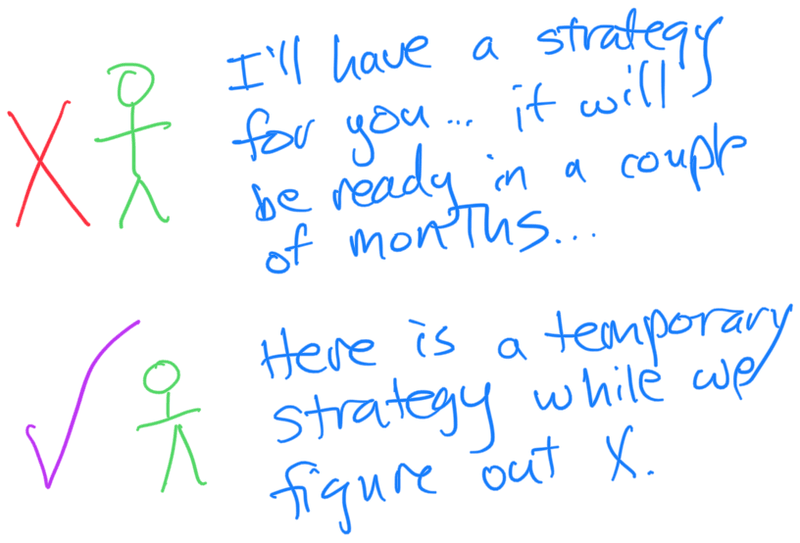
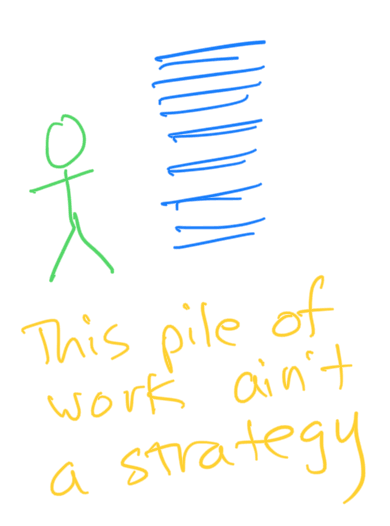

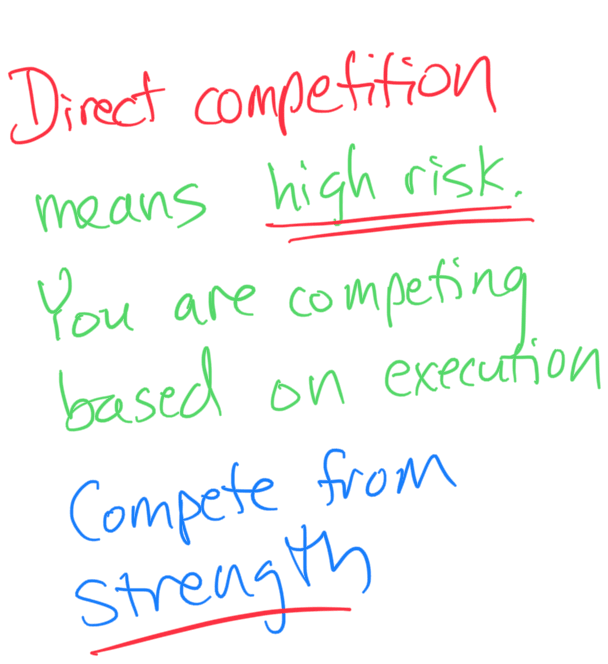
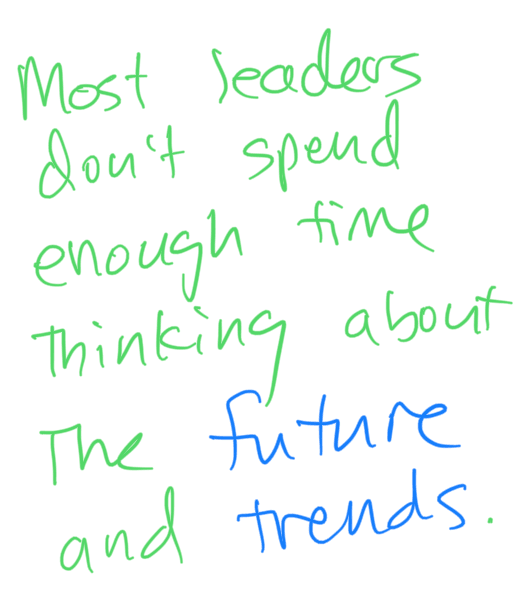
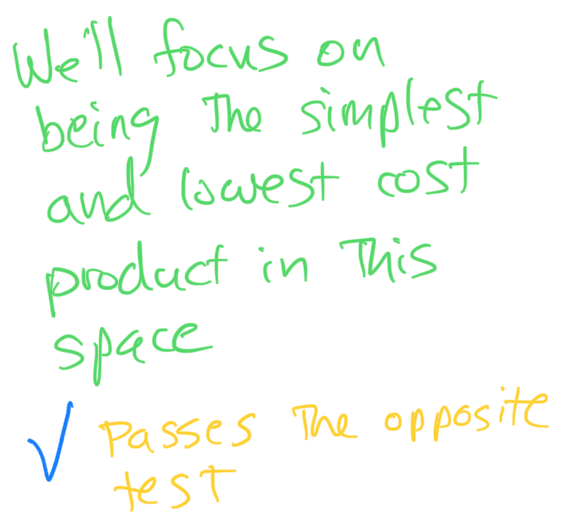
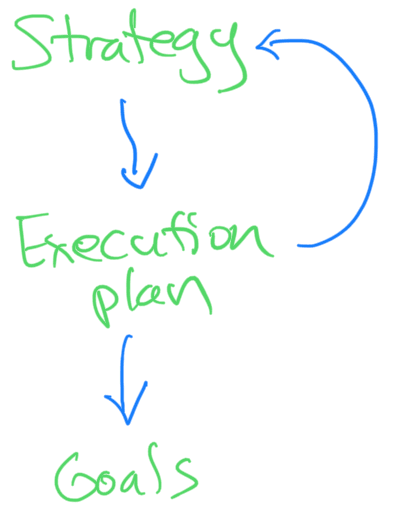
Comments powered by Talkyard.